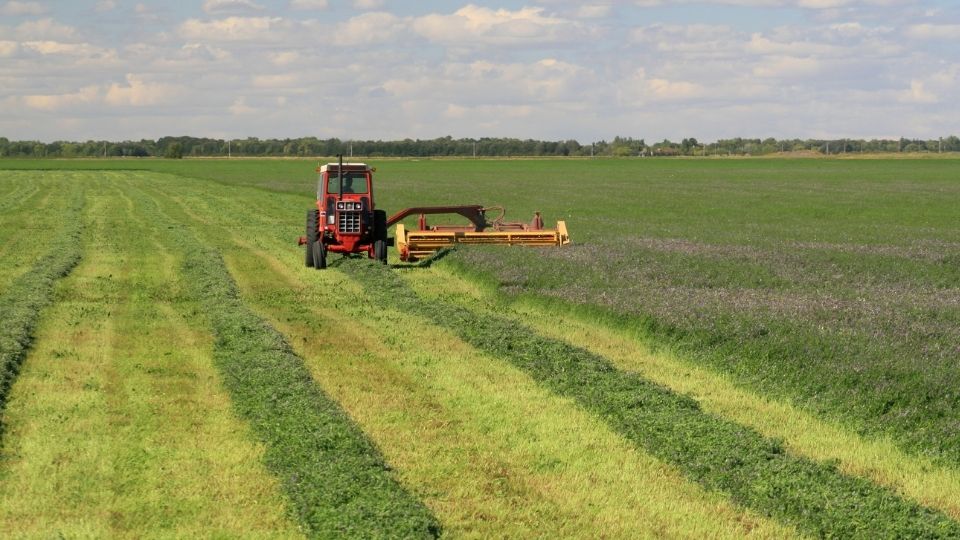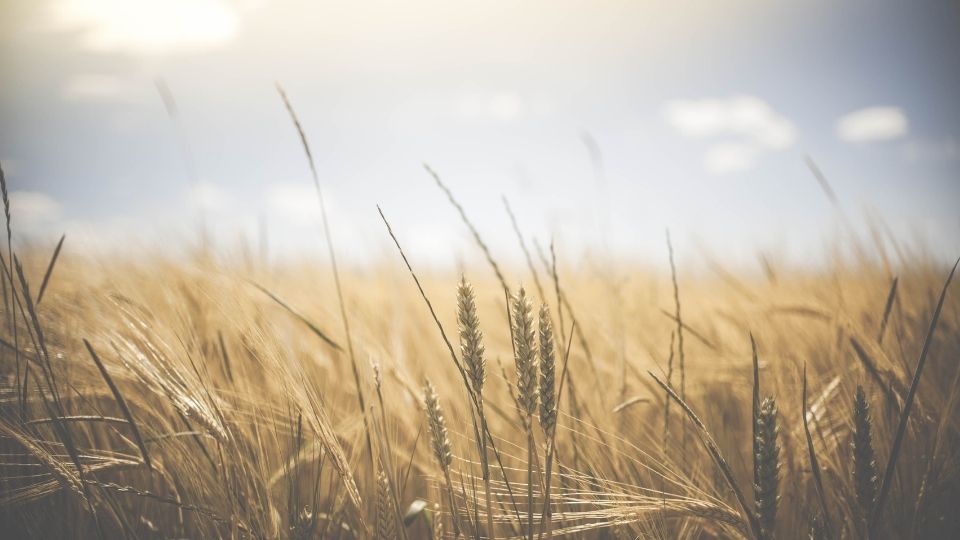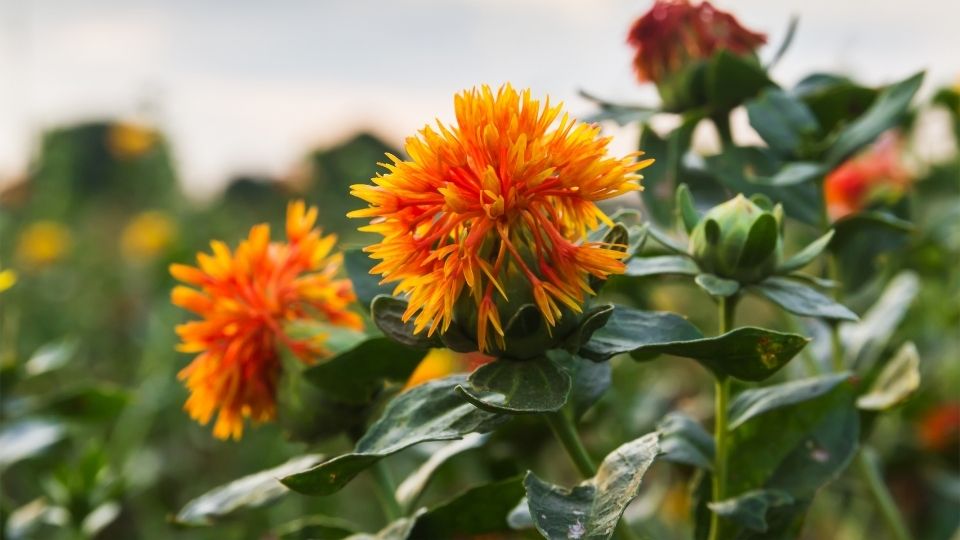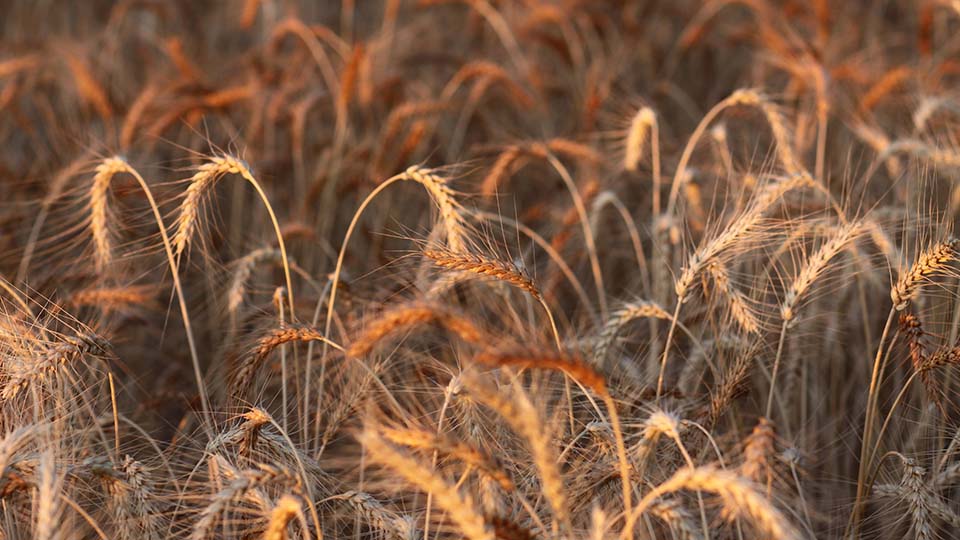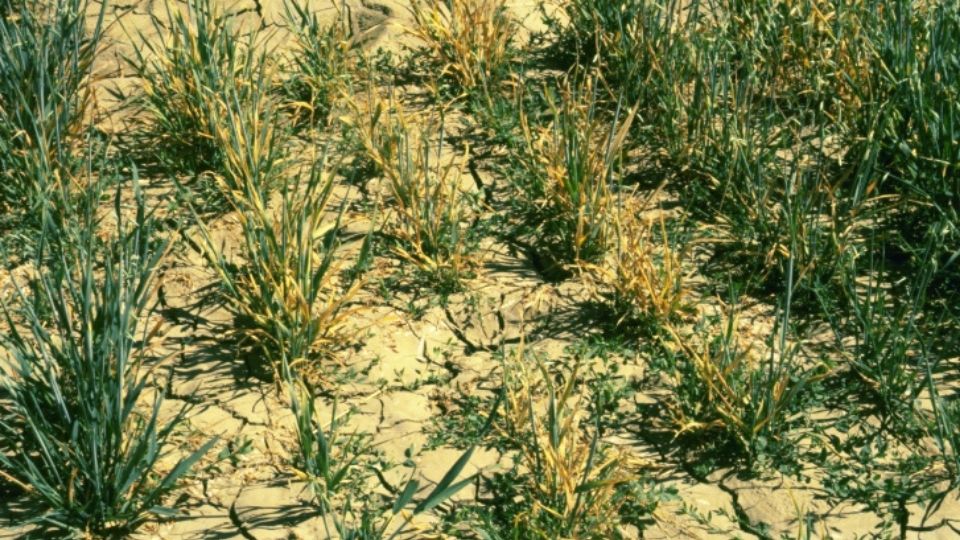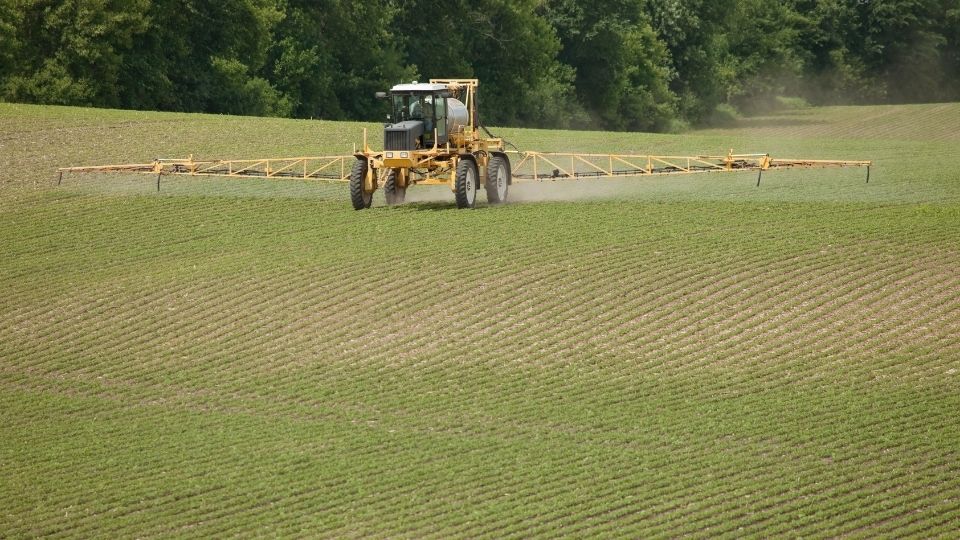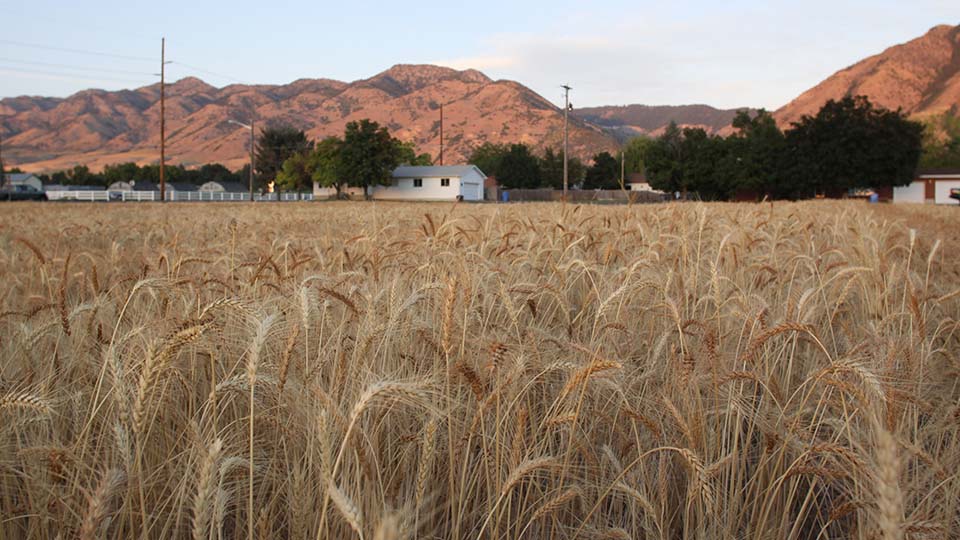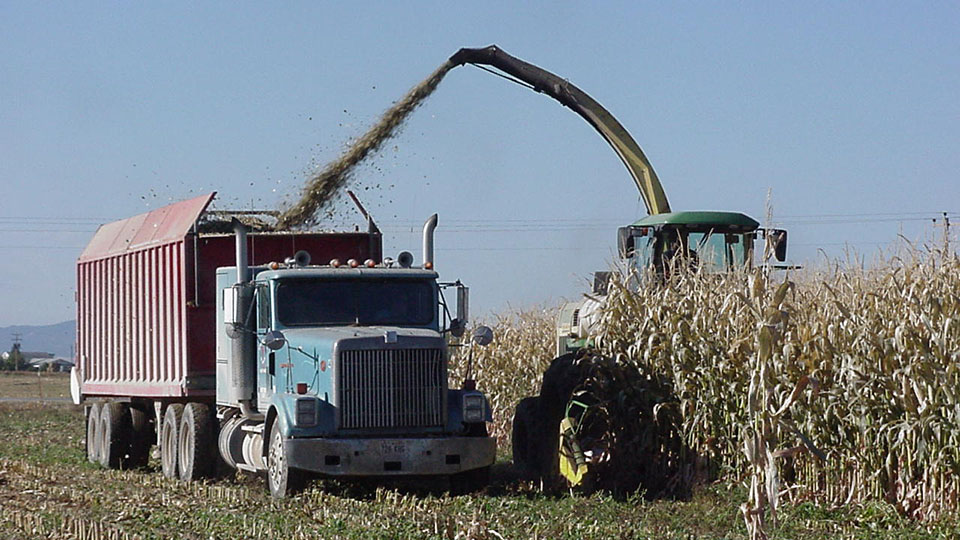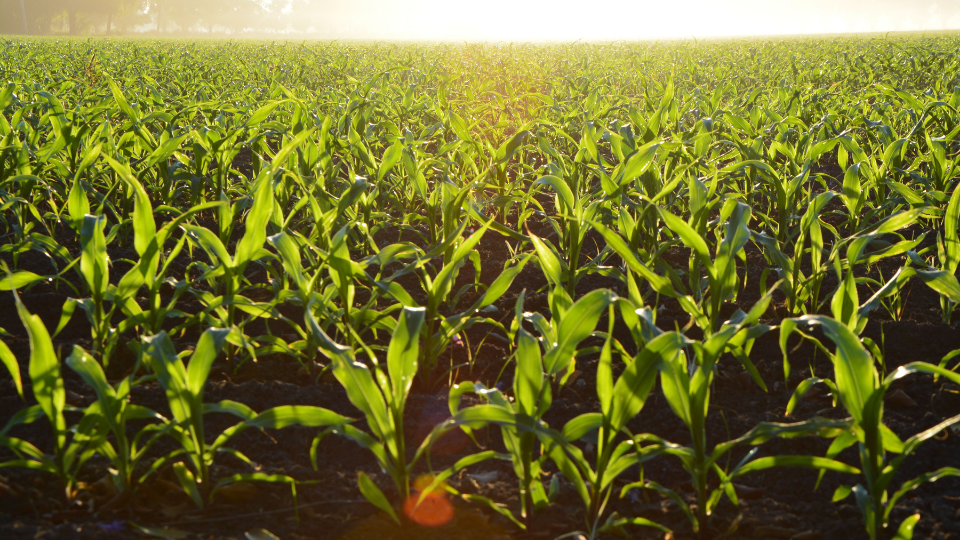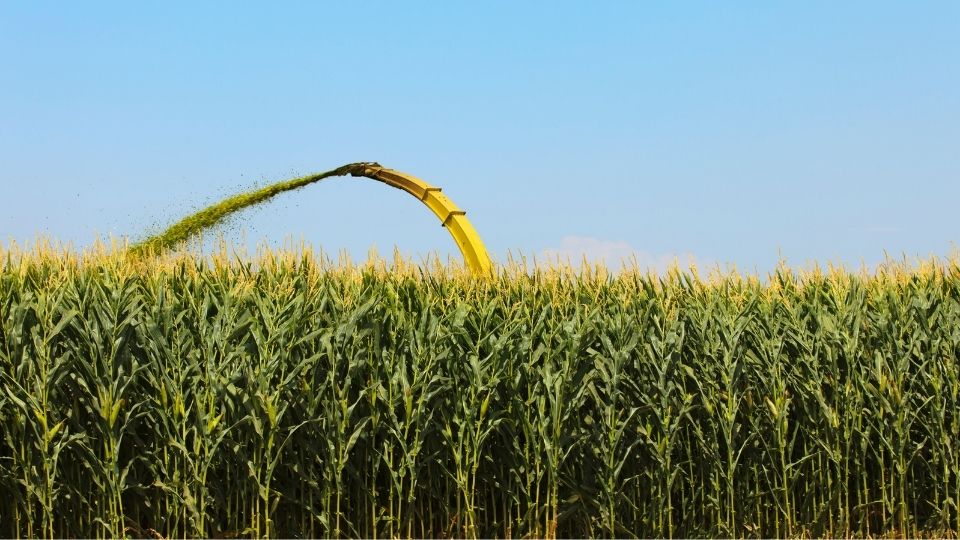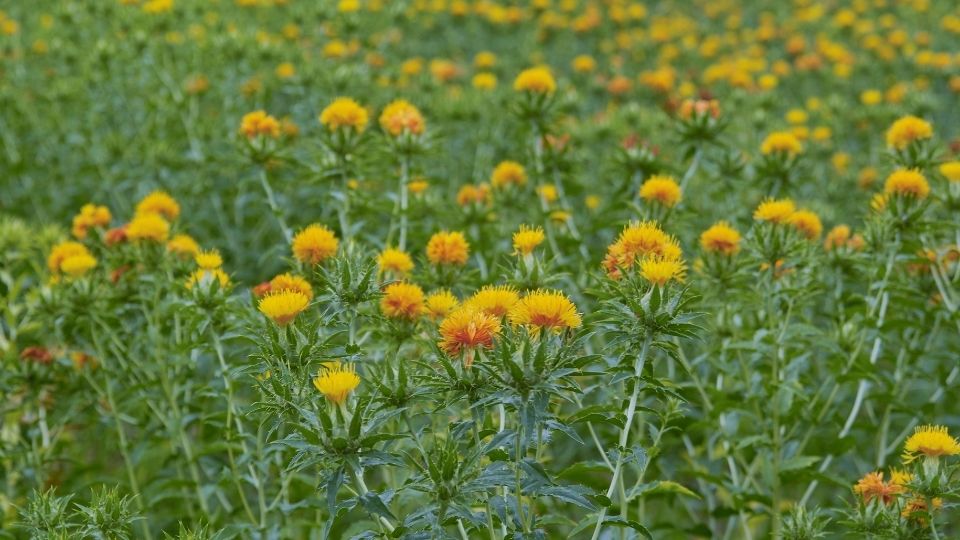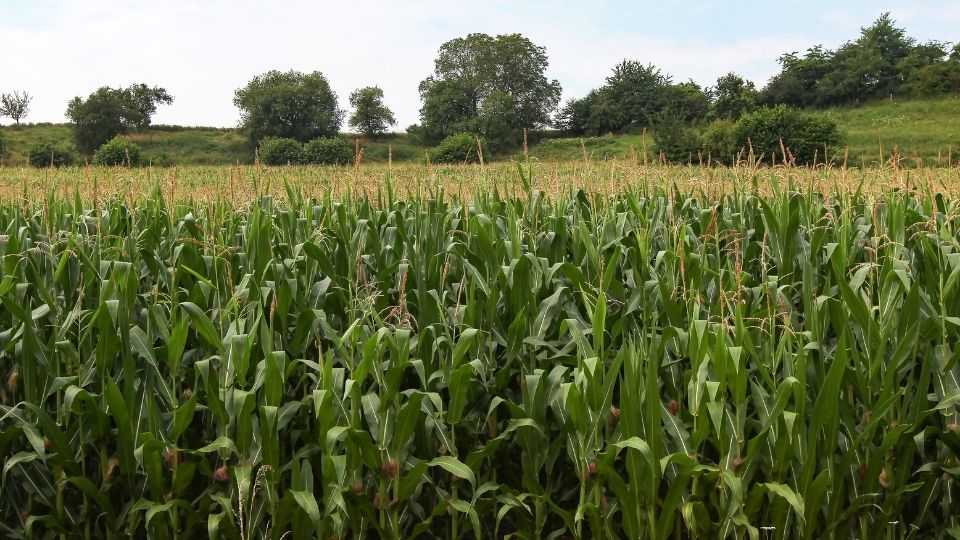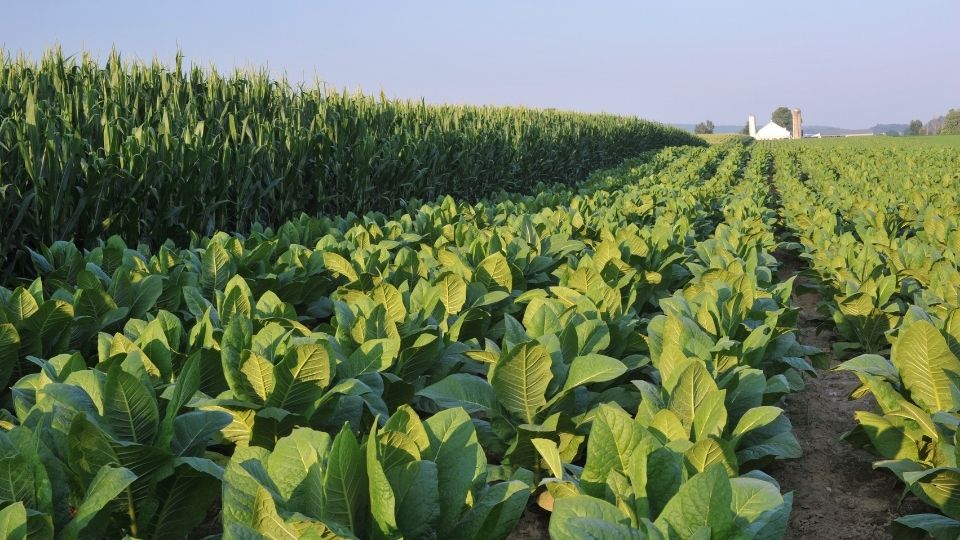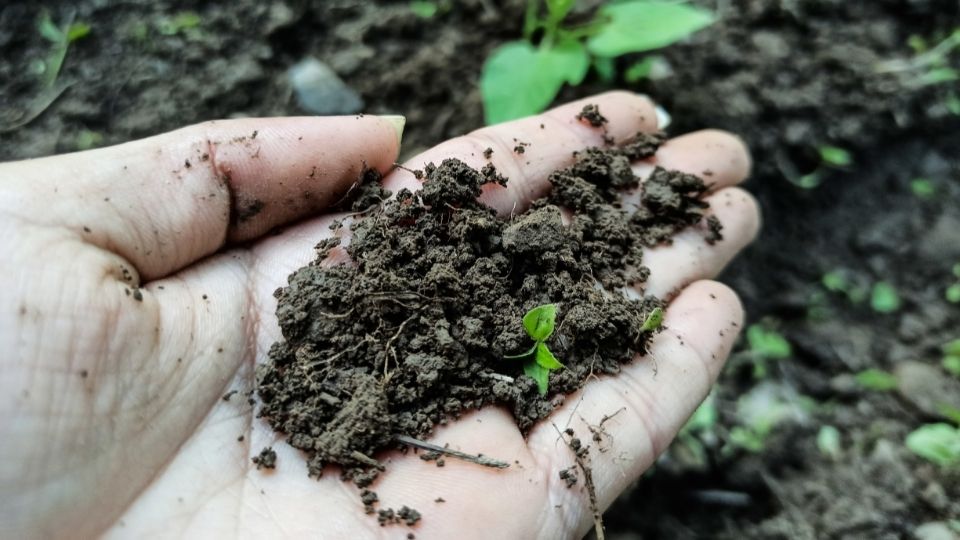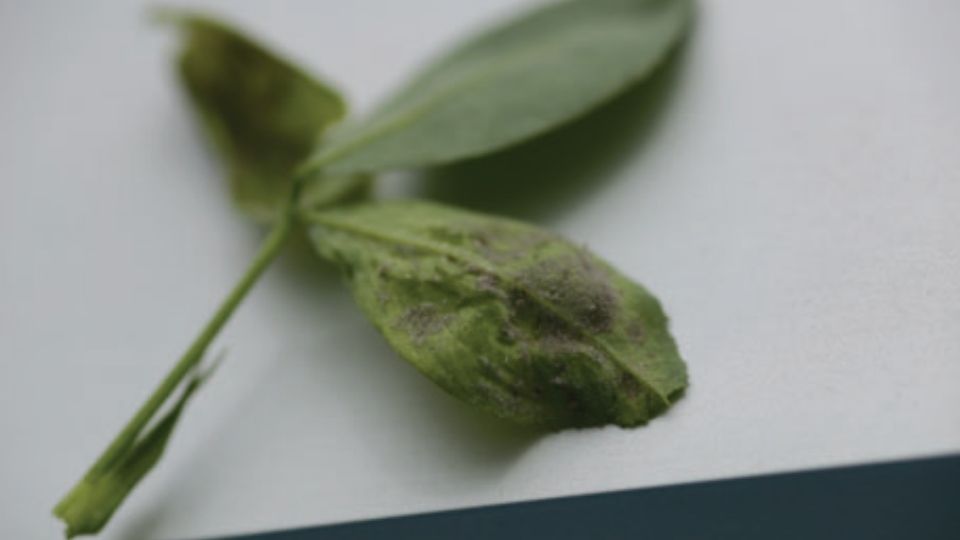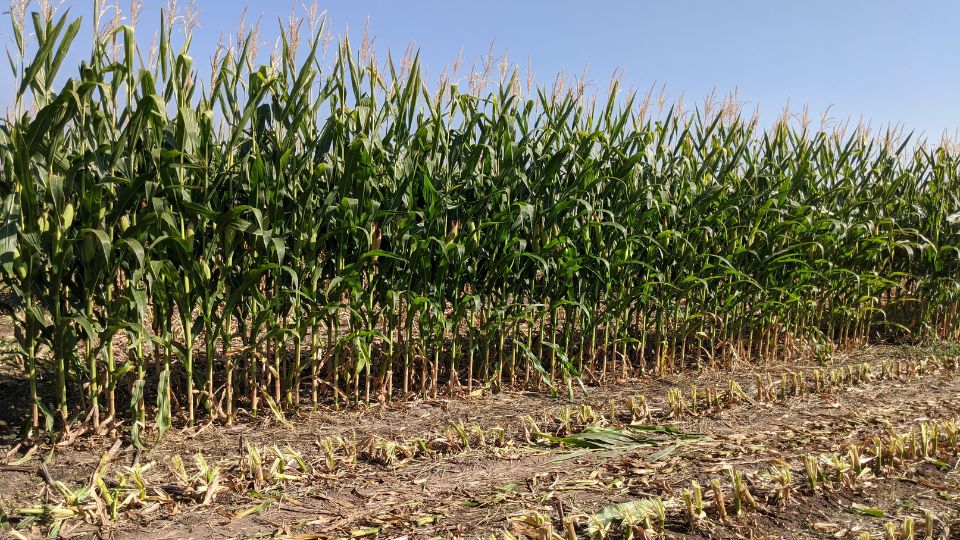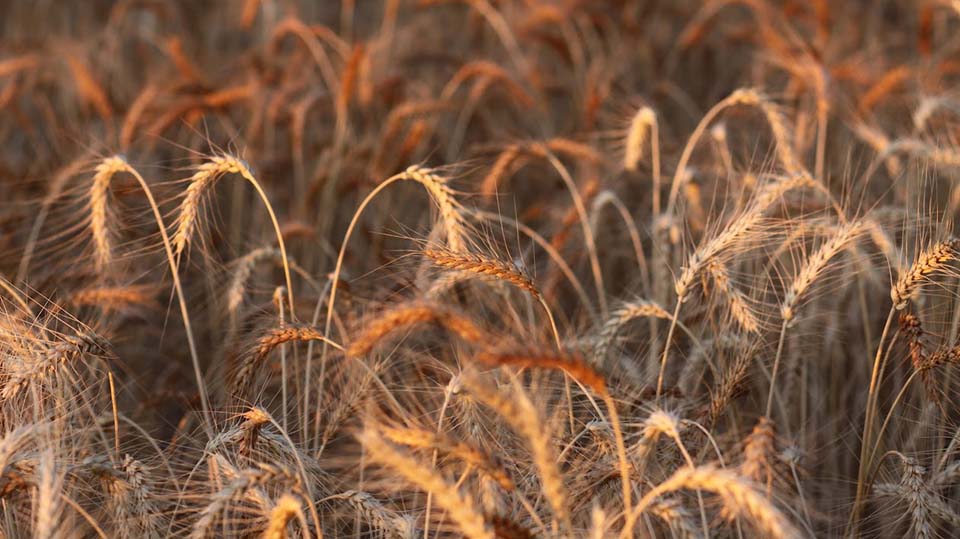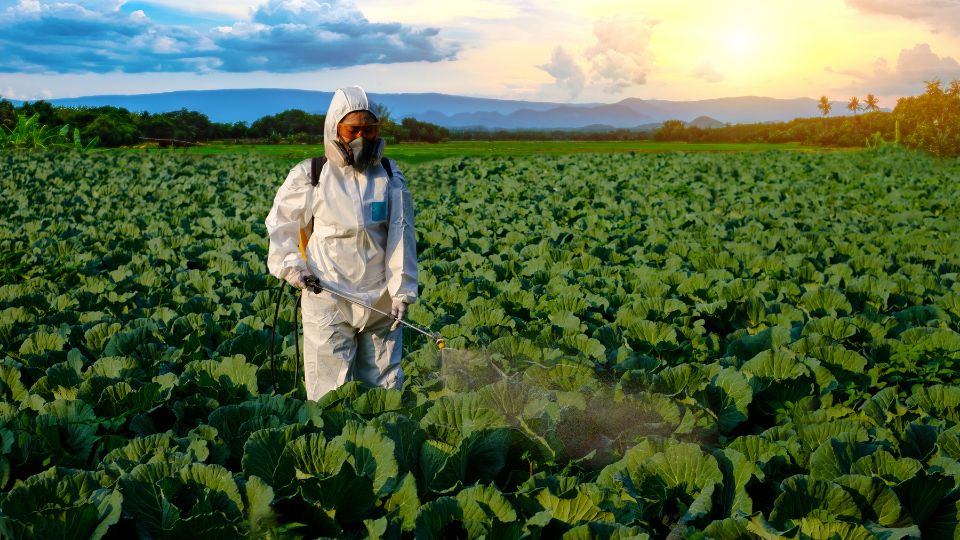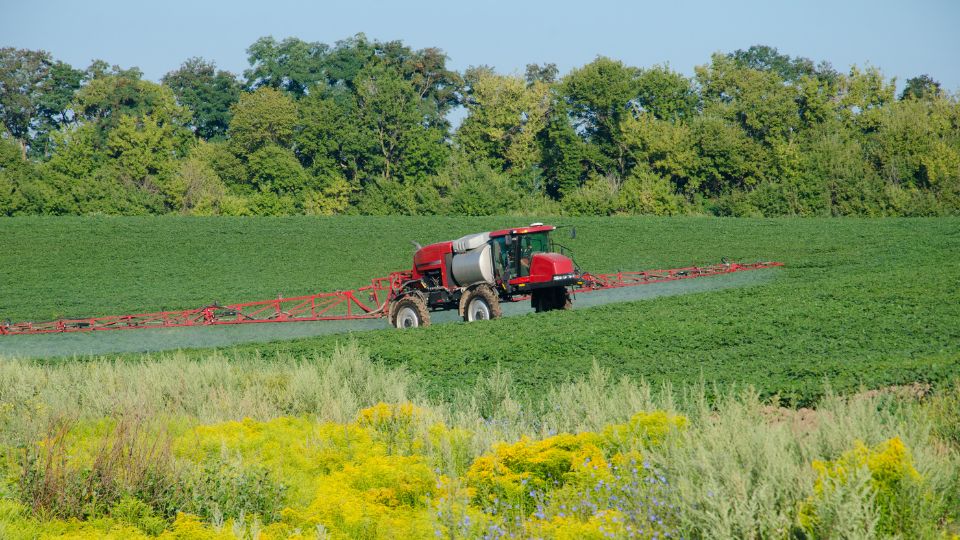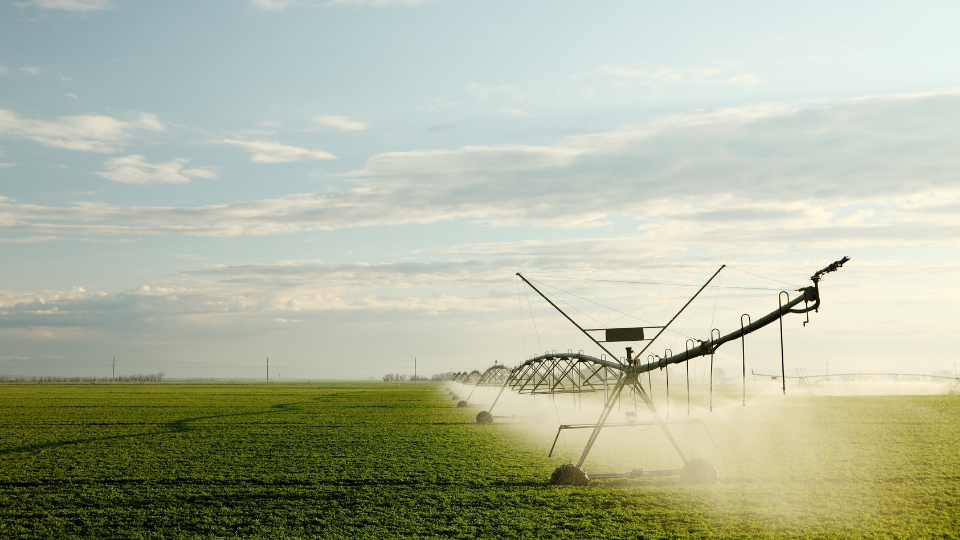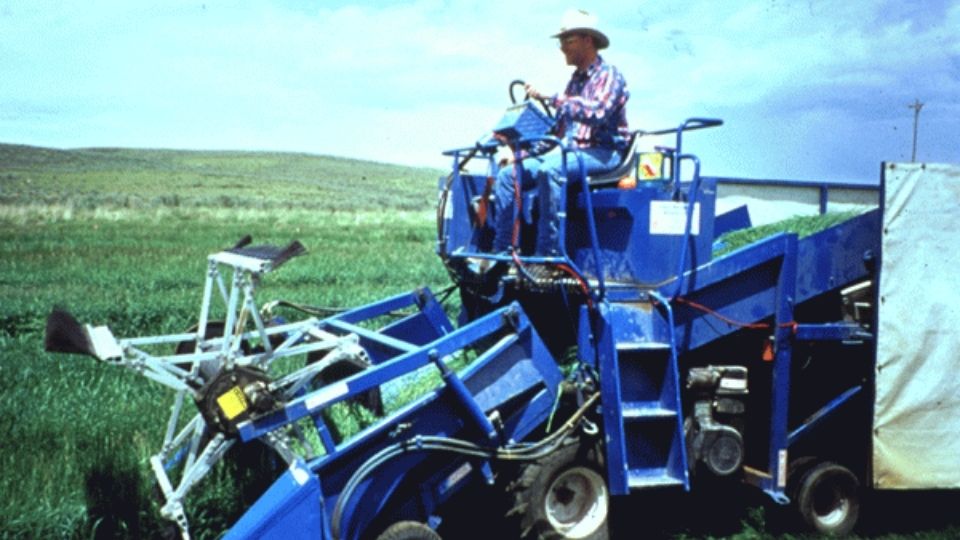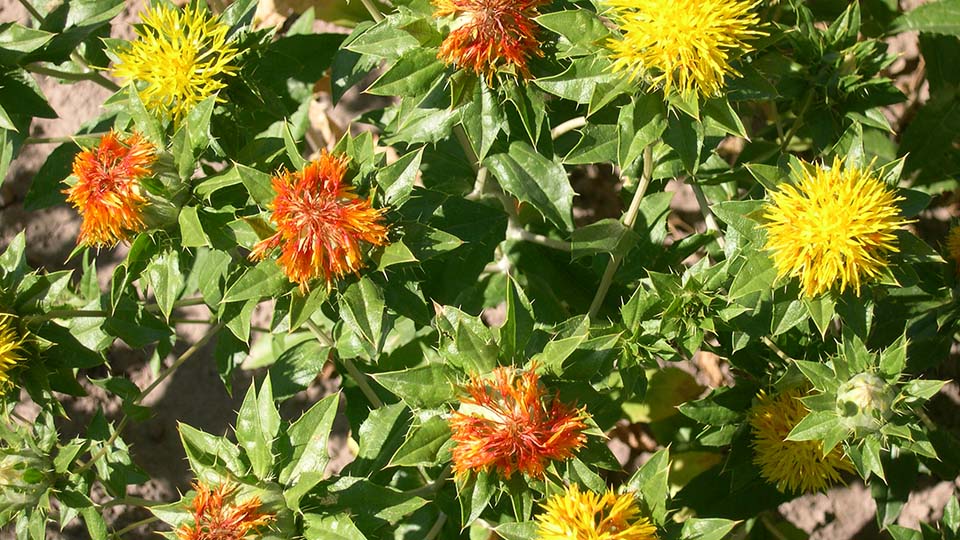Guide to Pivot Track Management
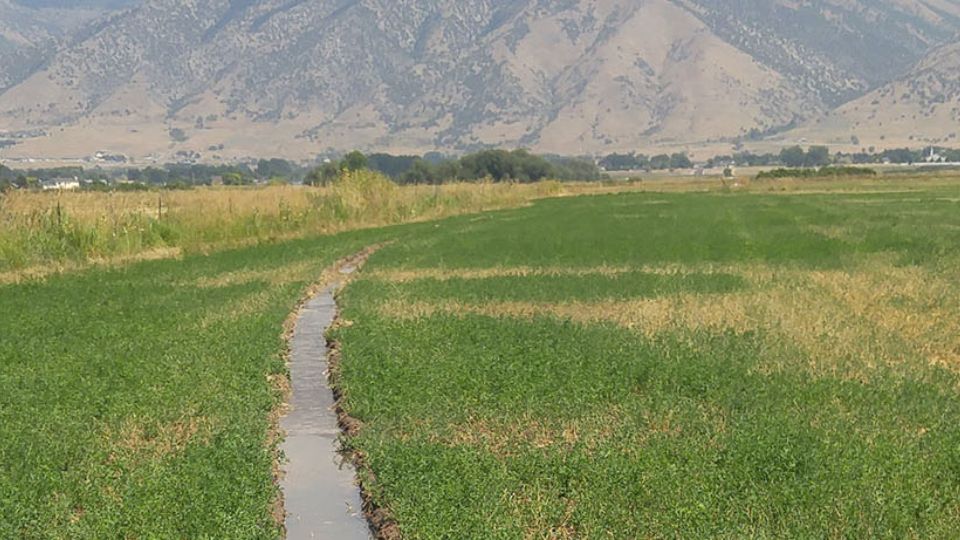
Introduction
Center pivot irrigation systems are the most popular form of irrigation in the western United States. A significant problem with center pivots is wheel track rutting. Deep wheel tracks can cause overirrigation because the pivot moves slower than intended due to slippage and sticking (Meyer & Hoffman, 1983). Additionally, deep tracks can cause damage to the pivot, including flat tires. Other equipment that must cross the tracks, including harvesting machines can also be damaged. Getting pivots unstuck is an unpleasant and time-consuming task, especially in tall crops, like corn. To prevent the negative and sometimes costly impacts of pivot tracks, this guide provides different strategies for managing wheel track rutting for center pivots and lateral-move systems.
How Are Wheel Tracks Created?
As a pivot (or lateral-move system) moves, each tower’s wheels run in the same track, time after time. The sprinklers close to the towers get water into the wheel tracks or wet the surrounding soil. One study showed that up to 3 times the amount of water sprinklers applied to the ground enters the wheel track because the water is intercepted by the tower running through it (Foley & Raine, 2001). To complicate matters, the water in the wheel track is often pushed ahead of the moving wheels in the rut, causing further deepening. Figure 1 helps illustrate problems caused by the ruts. This problem is compounded in perennial crops like alfalfa, where there is no annual tillage that fills the wheel tracks. Although wheel track rutting can be a problem in all soil types, clay soils are the most prone to rutting as clay soils lose their bearing strength when wet, and sandy soils are the least impacted because they maintain more bearing strength when wet (Figure 2).
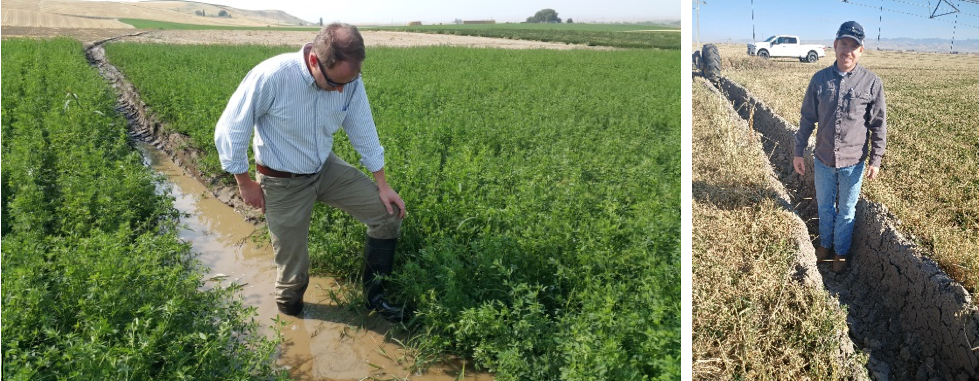
Photo credits: (left) B. Molaei and (right) J. Holt
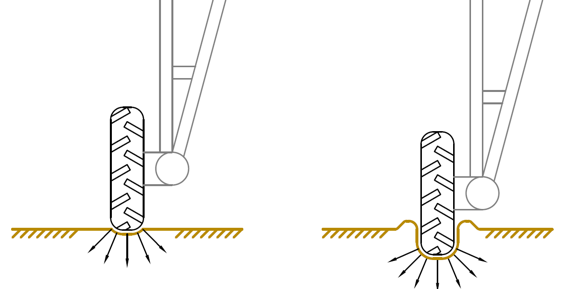

Potential Solutions
Over 70 years since the invention of center pivots, many methods for reducing wheel track rutting have been used (Table 1). The technologies and approaches can be divided into those that:
- Decrease the pressure on the wet soil by increasing the contact area with the soil,
- Modify soil structure,
- Keep water out of the wheel track,
- Fill the wheel tracks, and
- Modify the irrigation system.
Table 1. Equipment or Material Cost Estimates (Not Including Labor) in 2023 for Various Track Management Methods
| Method1 | Estimated 2023 cost for a standard 120-acre field with 1.2 acres of wheel track2 |
|---|---|
| Adding 3rd wheel to existing pivot | $28,000 |
| Adding 3rd wheel to new pivot | $14,000 |
| Various wheel and tire options | $13,000–$32,000 |
| Radial tires | $22,400 |
| PAM (annual cost) | $100 per year |
| Half-circle sprinklers | $1,000 |
| Boom back (single boom on each side of tracks) | $4,100 |
| Fill with gravel | $5,100 |
| Fill with soil (assuming soil is free) | $0 |
| Fill with straw | $4,000 |
| MDI (only on outlets near tracks) | $3,500 |
| LEPA (only on outlets near tracks) | $2,200 |
1PAM = polyacrylamide; MDI = mobile drip irrigation; LEPA = low-elevation spray application. The MDI cost does not include water filtration or treatment that is often necessary to prevent plugging. PAM is an annual cost, where many of the other options will last for about 5–10 years or longer. Boom backs do not include new sprinklers.
2Unless noted, cost estimates are to adapt these methods to existing pivots. New pivots would require tires, so the additional costs of some methods above with regular tire options would be less.
1. Decrease Pressure on Soil
Pressure is weight (pounds) per unit area (square inch). Since it is not reasonably possible to decrease the weight of the pivot or lateral, the best way to decrease the pressure on the soil is to increase the soil area that is bearing the pivot’s weight. The four most common methods are described below.
a. Use Larger Wheels and Tires
By increasing tire size (both diameter and width), more tire surface area is in contact with the soil, reducing the pressure on the soil. This is often referred to as floatation. However, larger tires increase the load on the driveline, requiring higher torque, and can increase the risk of drive motor and gear box failure. Larger tires are also more expensive than smaller tires.
b. Lower Tire Pressure
Tires with lower tire pressure also have more surface area in contact with the soil than wheels with higher tire pressure (Foley, 2008; Figure 3). However, lower pressures result in more sidewall flexing and cracking, which can be detrimental to tire life and function. Do not use a pressure lower than the minimum recommended by the tire manufacturer.
c. Add Additional Wheels and Tires
Adding wheels increases the tire area in contact with the soil, which decreases the pressure on the soil. Some pivot manufacturers allow adding a third wheel in the middle of a tower. Figure 4 shows a pivot tower with additional wheels to help reduce rutting. There are a few different ways to add a third tire to the tower; retail prices for the tires are about $3,000–$4,000 per tower to convert an existing machine and about $2,000 per tower if installed on a new machine. This would result in about $14,000 additional cost on a new seven-tower, ¼-mile pivot, or up to $28,000 to retrofit on an existing machine (Table 1).
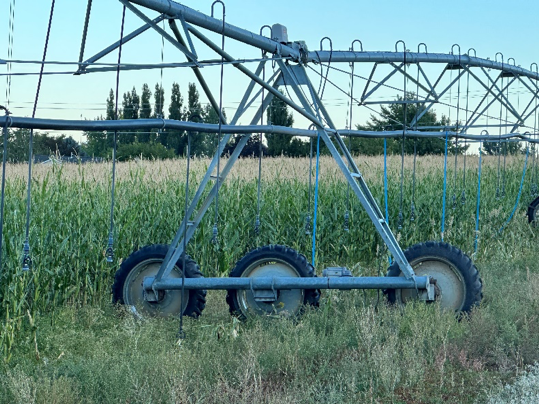
Photo credit: M. Yost
d. Adjust Wheel Configurations
Some pivot or lateral wheel configurations spread the weight out on the soil surface by creating a flatter surface that is in contact with the soil. Be aware that solid style tires and wheels will increase wear on drive train components. Having a rubberized tire provides cushion to the drive train. Irrigation dealers have noted that plastic tires claiming to reduce rutting often do not work well. Many other styles of wheel types or adaptations to wheels are available. Some examples are:
- Irricup,manufactured by Galileo Aircup (Caesarea, Israel), uses a double V-shaped structure to achieve an airless tire (Figure 5). A few options exist, but the most advanced retailed at about $4,600 per tower in 2023, which would cost about $32,000 for an entire ¼-mile standard pivot.
- RAAFT, manufactured by Polytech LLC (Seward, Nebraska), are tracks that wrap around existing tires. These retail at about $3,500 per tower and would cost roughly $24,000 for a standard ¼-mile pivot.
- Pivot Walker, manufactured by Chief Fabrication (Grand Island, Nebraska), uses galvanized pivot foot plates with angled side plates that prevent the mud from pushing out from under the pad.
- 0, an airless open wheel design by Zimmatic (Lindsay Corporation, Omaha, Nebraska) is made of a tensioned rubber belt with a steel core, designed to replace rounded pneumatic tires with a flatter surface to spread the weight out while remaining flexible to obstructions (Figure 5).
- Radial tires are offered by many manufacturers. Radial tires can increase the tire footprint and allows for lower air pressure than a traditional bias ply tire. Radial tires retail for around $1,200–$1,800 per tire depending on brand and size.

Figure 5. Examples of Pivot Tire Modification Examples, Including the NFTrax2.0 by Lindsay Corporation (left), the Irricup by Galileo Cupwheel (middle) and RAAFT by Polytech LLC (right, and insert)
Photo credit: D. Larsen
2. Change Soil Structure
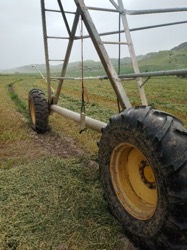
Figure 6. Polyacrylamide (PAM) Log Inside a Plastic Mesh Sack Hung Above the Wheel Track, Which Sprinkler Water Hits and Dissolves, Causing It to Drip Into the
Wheel Rut
Photo credit: M. Yost
a. Use Polyacrylamide (PAM) Soil Conditioner
Polyacrylamide (PAM) is a polymer that can bind soil particles together. It has been used in surface irrigation to successfully reduce erosion for several decades. PAM can also increase soil infiltration rates, as has been commonly found by other researchers (Sojka et al., 1998; Zhang & Miller, 1996) who evaluated PAM in surface irrigation systems, finding infiltration increases up to 30%. Conversely, some research has also been conducted on using PAM to reduce seepage from canals (Young & Zhu, 2008). There has been recent interest in using PAM to stabilize the soil in wheel tracks to reduce rutting. PAM itself does not change the bearing strength of the soil, so the idea in using PAM is that it may help the soil in and near the wheel track stay drier. Irrigation dealers and agronomists are marketing PAM in powder and log forms (Figure 6). The estimated cost of using a PAM log on each tower of a ¼-mile pivot in 2023 was about $100 per year. This was based on retail prices in northern Utah. One potential challenge with PAM is that potential infiltration increase due to PAM in the track could cause more water retention and subsequently cause deeper tracks. In recent research trials at Utah State University, PAM has had little or no impact on rut depths. Thus, irrigators should use caution and test small quantities to evaluate its utility on their farms.
3. Keep Water Out of the Wheel Tracks
Soils, especially non-sandy soils, lose structural strength the more wet they become. Wheel track rutting can be significantly reduced if the soil is kept dry enough when the wheels traverse it. There are several methods to keep water out of the wheel tracks to avoid deep ruts.
a. Use Half-Circle Sprinklers
Half- or part-circle sprinklers can be used next to the tower to throw the water behind the pivot’s travel direction to decrease the amount of water falling into the wheel track from sprinklers or from interception by the tower (Figure 7). Although half-circle sprinklers keep the wheel track dry, they can reduce the water distribution uniformity if not designed correctly. This can reduce the crop productivity near the wheel. It can be difficult to both keep all water out of the wheel track and fully irrigate immediately behind the pivot tower. For a standard seven-tower pivot, half-circle sprinklers cost about $143 per tower in 2023, or a total of about $1,000 per pivot (Table 1).

Photo credit: J. Holt
b. Offset Sprinkler Booms or Boom Backs
In this method, the two to four sprinklers located adjacent to the towers are offset on booms behind the wheels (Figure 8). If the pivot irrigates in both directions, boom backs can be installed on both sides and operated as required by manual or automatic valves to only throw the water behind the wheels when moving in either direction. Since the boom backs throw the water behind the moving tower, there is also less water intercepted by the tower to drip into the wheel tracks and can result in improved uniformity for the sprinklers (Figure 8). Boom backs can be combined with half-throw sprinklers for additional help keeping the wheel track dry. Adding a single boom back on each side of each tower to an existing seven-tower, ¼-mile pivot line would cost around $4,100 at 2023 prices (Table 1). This does not include the price of new sprinklers. Further, the labor would be a few additional thousand dollars to install the equipment; obtain more exact quotes from local dealers.
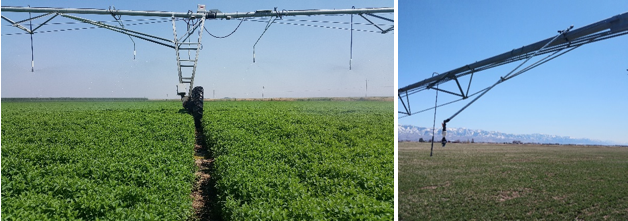
Figure 8. Offset Booms (Boom Backs) for Controlling Wheel Track Development
Photo credits: (left) T. Peters and (right) J. Holt
c. Modify Span Pipe Drain
Many pivots have a span pipe drain valve that is located at the lowest point of the pipe next to the tower. Some of these drains automatically open each time the pivot stops irrigating. The drain water can flow directly into the wheel track. By removing the automatic drain (not recommended) or connecting the drain to a hose and then possibly to a tee above the pressure regulator in a sprinkler drop, the water can instead drain through a sprinkler well away from the wheel track. Also, be sure to perform maintenance on drains. Those in good working condition will only put water in the tracks on startup/shutdown. This is one of the maintenance items that is often overlooked and results in water always draining into wheel tracks. A very high percentage of pivots have at least one nonworking drain causing rut issues.
d. Remove the Sprinkler Next to the Tower
For fields prone to deep ruts, some growers simply either remove the sprinklers next to the towers or turn them off. Although this helps reduce the amount of water hitting and wetting the wheel track, there is often yield loss due to water stress of the crop growing next to the wheel track.
4. Fill the Wheel Tracks
Wheel tracks can be filled in by tillage operations in annual field crops. Tracks can also be directly filled with soil in perennial crops or during the season if necessary. It is also possible to fill the tracks with materials that give the soil additional structural strength such as sand, gravel, straw, or other available material.
a. Fill the Wheel Tracks With Gravel
Many growers add gravel to their wheel tracks. This essentially creates narrow gravel roads for the towers to drive on (Figure 9). This can be a long-term fix that is quite effective as the gravel creates structural strength and allows water to drain through it. However, it requires careful tillage operations afterward to keep the gravel in the tracks and avoid spreading it to the rest of the field. This usually means tilling in a circle to avoid crossing the wheel tracks. Filling tracks with gravel can be highly effective but is expensive, permanently alters the field, and often dictates how you must conduct future field operations (working the field in circles instead of straight). Further, filling tracks with gravel can reduce the farmable area by over 1%. The cost of filling the tracks with gravel varies greatly based on the gravel type used, wheel track depth, and the area of field affected. Using the calculation for 1% of a 120-acre farmable area, at 6 inches depth, for $25/ton, gravel costs to fill the tracks would be around $5,100 (Table 1). Growers would also need to include additional equipment and labor costs to apply the gravel.
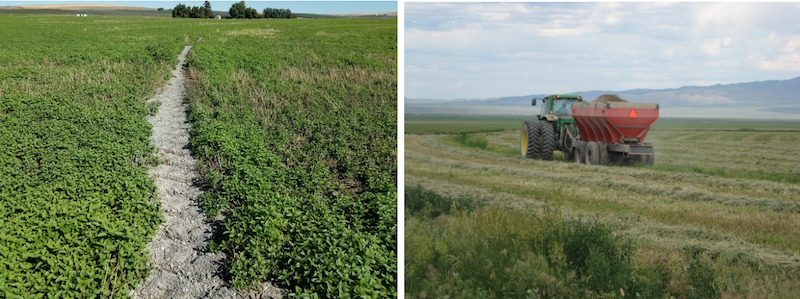
Figure 9. Wheel Track Filled With Gravel (left), and Gravel Filling Operation (right)
Photo credits: (left) B. Molaei) and (right) B. Barker
b. Fill the Wheel Tracks With Soil

Figure 10. Wheel Track Filled With Straw
Photo credit: B. Molaei
Filling the wheel tracks with soil and then compacting and flattening soil with a terrace blade, road grader, or check-bank crowder can prevent water from pooling in wheel tracks and ruts forming. Filling the tracks with soil can be an inexpensive option. You can find fill soil for low cost or even for free (less trucking cost).
c. Fill the Wheel Track With Straw
Straw added to wheel tracks will mix with the mud as the pivot tower wheels pass over it, giving the soil additional structural strength (Figure 10). Using netted straw can help fill the wheel tracks. For 900 square feet of straw at Utah retailers in 2023, it costs around $68. Therefore, to fill 1.2 acres of wheel track for a standard 120-acre center pivot, at 6 inches deep, it would cost around $4,000 for the straw (Table 1). Growers would also need to consider the additional equipment and labor costs to apply the straw.
5. Modify Irrigation Systems
a. Mobile Drip Irrigation (MDI)
Mobile drip irrigation (MDI) is when a center pivot drags drip tubing with integrated emitters along the length. This is not just a solution to increase the irrigation system’s efficiency, but since the drip water is applied behind the pivot, it keeps the wheel track dry and thus decreases the wheel track’s depth. With MDI, no water scatters directly into the ruts (Figure 11). This results in shallower wheel track depths than with mid-elevation sprinkler application (MESA) and low-elevation sprinkler application (LESA). The cost of using MDI only adjacent to the wheel tracks may be near $3,500 in 2023 for a standard ¼-mile pivot (Table 1).
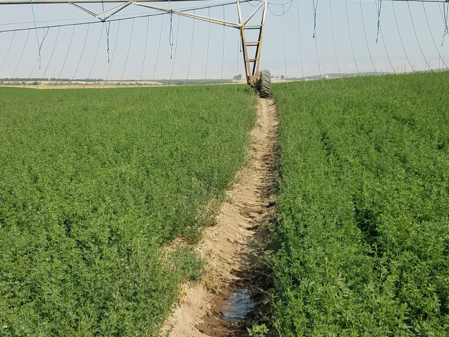
Photo credit: B. Molaei
b. Low-Elevation Precision Application (LEPA)
Low-elevation precision application (LEPA) dribbles water directly onto the soil and is positioned closer to the ground than mid-elevation sprinklers (Colaizzi et al., 2011; Lamm et al., 2019; Peters et al., 2017). Because of this, the grower has more control over how much water makes it into wheel tracks. Although the water does not scatter directly on the tracks, water applications are concentrated and can breach or seep through the wheel tracks and cause rutting or runoff through the track (Figure 12). In recent Utah State University research trials, LEPA did show the best potential for maintaining yield and crop quality compared to other options with MESA, as well as minimizing water entering the track to reduce ruts. The results of these trials will be discussed in detail in a forthcoming fact sheet. To help reduce water running into the track, the LEPA sprinkler nearest to the track can use a bubbler pad to reduce water spraying into the track (Figure 13). In 2023, the cost of using LEPA for each tower costs around $315 per tower or about $2,200 for a standard seven-tower pivot (Table 1).

Figure 12. Water Pooling That Can Develop on Wheel Tracks With Adjacent Low-Elevation
Precision Application (LEPA) Sprinklers
Photo credits: (left) B. Molaei) and (right) T. Peters

Figure 13. Low-Elevation Precision Application (LEPA) Style Sprinklers Used on Outlets Near the Wheel Tracks Can Keep Water Off the Track, and Bubbler Pads Can Also Prevent Water From Pooling in Tracks
Photo credit: J. Holt
Summary
Many options are available to help reduce the impact of pivot ruts on irrigation efficiency and crop yield. Methods can generally be categorized as those that decrease the pressure on the wet soil by increasing the contact area with the soil, keep water out of the wheel track, fill the wheel tracks, and modify the irrigation system near the tracks. Each method has varied effectiveness in reducing wheel rut depths and comes at various prices, ranging from a few hundred dollars to over $30,000 per standard ¼-mile pivot. This guide intends to provide considerations and approximate costs for many common options and not to recommend certain options over others. It is also important to note that this guide did not cover many other commercial and noncommercial options. Further, little replicated data exists on each option’s effectiveness and long-term economic viability. Thus, irrigators are encouraged to explore each option, consult with irrigation suppliers and dealers for more exact prices, trial many options in small areas, and then scale up the options that work most effectively.
References
-
Colaizzi, P. D., Evett, S. R., & Howell, T. A. (2011). Corn production with spray, LEPA, and SDI. In: Proceedings of the 2011 Central Plains Irrigation Conference, Burlington, Colorado, February 22–23. http://Hdl.Handle.Net/10217/47726. https://mountainscholar.org/handle/10217/210875
-
Foley, J. P. (2008). Centre pivot and lateral move machines. WATERpak: A Guide for Irrigation Management in Cotton, p. 202. https://eprints.usq.edu.au/15348/1/Foley_WATER2008_PV.pdf
-
Foley J. P. & Raine S. R. (2001). Centre pivot and lateral move machines in the Australian cotton industry. National Centre for Engineering in Agriculture. Toowoomba, Australia.
-
Lamm, F. R., Bordovsky, J. P., & Howell Sr., T. A. (2019). A review of in-canopy and near-canopy sprinkler irrigation concepts. Transactions of the ASABE, 62(5), 1355–1364. https://doi.org/10.13031/trans.13229.
-
Meyer, R., Hoffman, R. (1983). A statistical analysis of wheel rut depths with center pivot irrigation systems. Farm Research, 41(2), 16–17. http://hdl.handle.net/10365/10184
-
Peters, T., Neibling, H., Stroh, R., Molaei, B., & Mehanna, H. (2017). Low energy precision application (LEPA) and low elevation spray application (LESA) trials in the Pacific Northwest. Washington State University Extension. 1–22. http://irrigation.wsu.edu/Content/Fact-Sheets/LEPA-LESA.pdf
-
Sojka, R. E., & Lentz, R. D. (1995). Net infiltration and soil erosion effects of a few ppm polyacrylamide in furrow irrigation water. In: Proc. 2nd Intl. Symposium on Sealing, Crusting and Hardsetting Soils: Productivity and Conservation. Australia-Brisbane (University of Queensland), pp. 349–354. https://eprints.nwisrl.ars.usda.gov/id/eprint/1072/
-
Young, M. H., & Zhu, J. (2008). Applying polyacrylamide (PAM) to reduce seepage loss of water through unlined canals. 2008 UCOWR/NIWR Conference, Durham, N.C. https://opensiuc.lib.siu.edu/cgi/viewcontent.cgi?article=1022&context=ucowrconfs_2008
-
Zhang, X. C., & Miller, W. P. (1996). Polyacrylamide effect on infiltration and erosion in furrows. Soil Science Society of America Journal, 60(3), 866–872. https://doi.org/10.2136/sssaj1996.03615995006000030027x
Published November 2023
Utah State University Extension
Peer-reviewed fact sheet
Authors
Matt Yost, Utah State University, Agroclimate Specialist
Behnaz Molaei, Assistant Professor, Tennessee State University
R. Troy Peters, Washington State University Extension, Irrigation Specialist
Clara Anderson, Utah State University, Research Assistant
Burdette Barker, Utah State University Extension, Irrigation Specialist
Jonathan Holt, Utah State University, Former Student
Dustin Larsen, Wish Northwest Inc.
Related Research


